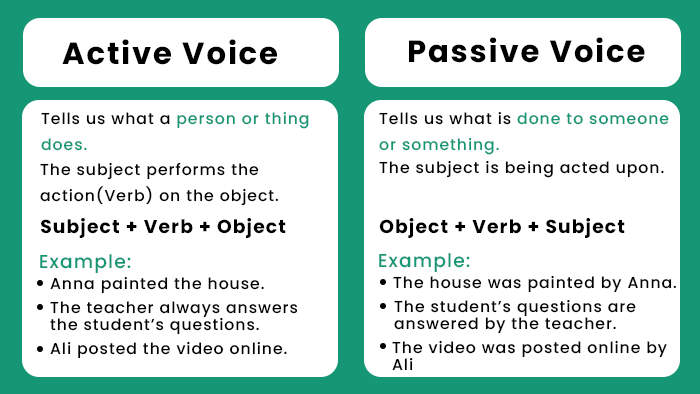When it comes to writing, understanding the difference between active voice and passive voice is crucial. These two voices can significantly impact the clarity and effectiveness of your writing. By knowing when to use each voice, you can improve the overall quality of your work.
Active voice is when the subject of a sentence performs the action. In active voice, the subject is the doer of the action, and the object is the receiver of the action. For example, “The cat chased the mouse” is an example of a sentence in active voice. The cat (subject) is performing the action of chasing, and the mouse (object) is being chased.
Explain Active Voice and Passive Voice
On the other hand, passive voice is when the subject of a sentence is acted upon. In passive voice, the object of the action becomes the subject of the sentence, and the doer of the action may be omitted or mentioned later in the sentence. For example, “The mouse was chased by the cat” is an example of a sentence in passive voice. The mouse (subject) is being chased, and the cat (object) is the doer of the action.
One of the main differences between active voice and passive voice is the clarity and directness of the sentence. Active voice is generally more straightforward and easier to understand because it clearly identifies the doer of the action. Passive voice, on the other hand, can sometimes be vague or wordy, as the doer of the action is not always clearly stated.
Another difference is the impact on the tone of the writing. Active voice tends to be more engaging and dynamic, as it focuses on the doer of the action. Passive voice, on the other hand, can sometimes sound more formal or distant, as the emphasis is on the receiver of the action rather than the doer.
Overall, it’s important to use active voice when you want to emphasize the doer of the action and make your writing more direct and engaging. Passive voice can be useful in certain situations, such as when the doer of the action is unknown or when you want to shift the focus to the object of the action. By understanding the differences between active voice and passive voice, you can make informed choices about how to structure your sentences for maximum impact.
In conclusion, active voice and passive voice are two distinct ways of structuring sentences that can have a big impact on the clarity and tone of your writing. By knowing when to use each voice, you can enhance the effectiveness of your writing and communicate your ideas more clearly to your readers.
